Llamas and alpacas are domesticated members of the camelid family. That makes them camelid cousins to the Bactrian camel and the Dromedary camel, as well as the vicuña and guanaco.
Unlike some animal species, camelids may crossbreed and produce fertile offspring. Wild South American camelids, the vicuña and guanaco, normally don’t mate with their domestic cousins, the llama and alpaca; however, some controlled breeding has taken place. When a llama and alpaca mate, their offspring is called a Huarizo. When an alpaca and a vicuña mate, their offspring is referred to as a Pacovicuna. Because the fur of the Pacovicuna is similar to the vicuña’s soft fleece, it’s becoming increasingly popular.
Differences Between a Llama and an Alpaca?
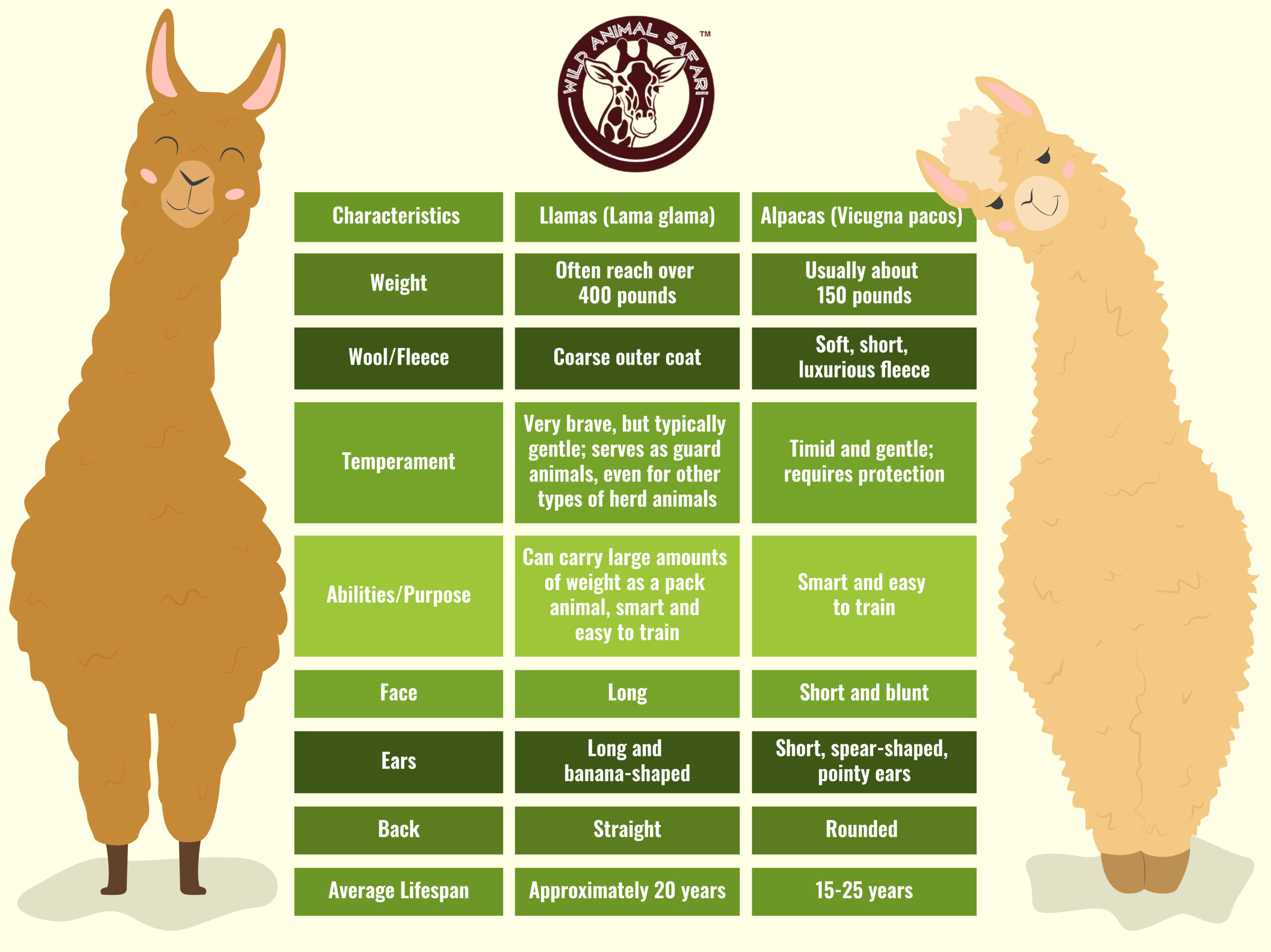
When you see one of these adorable creatures, do you know which animal you’re looking at? Is it a llama? Or maybe an alpaca? Hhmmm. Are you sure?
The biggest difference between llamas and alpacas is their size and the type of coat each of them has. Llamas grow a coarse wool coat, whereas an alpaca’s hair is longer and finer. Let’s take a look at a lot more of their differences.
Size
When comparing the two animals side by side, it’s easy to tell them apart. The average llama is between 5’ 6” and 5’ 9” tall, making llamas about a foot taller than the average alpaca which measures 36” at the shoulders. A llama typically weighs between 280 and 450 pounds, more than twice the size of the alpaca which weighs between 100 and 175 pounds.
There is no significant difference in size between males and females for either llamas or alpacas.
A baby llama weighs 20 to 35 pounds at birth. The birth weight of a baby alpaca, however, is much smaller – 10 to 17 pounds. Interesting facts about the pregnancy and birth of llamas and alpacas:
- Gestation periods are very similar despite their size differences – the llama is 342-355 days and the alpaca is 335 to 350 days
- Baby alpacas and llamas are called “crias” which is Spanish for babies
- Cria are able to stand, run and nurse between 30 to 60 minutes from birth
- Multiple births are rare
Ears

Another easy way to tell the difference between llamas and alpacas is by comparing their ears. Llamas have long, banana-shaped ears that stand straight up, making them appear alert. Alpaca ears, on the other hand, tend to be short and pointy.
Faces
A llama’s face, like its ears, is long. The alpaca’s face, however, is short and rounded.
We hate to play favorites, but the alpaca is typically cuter than the llama! Alpacas tend to have lots of fur on their face, whereas llamas tend to have less.
Color
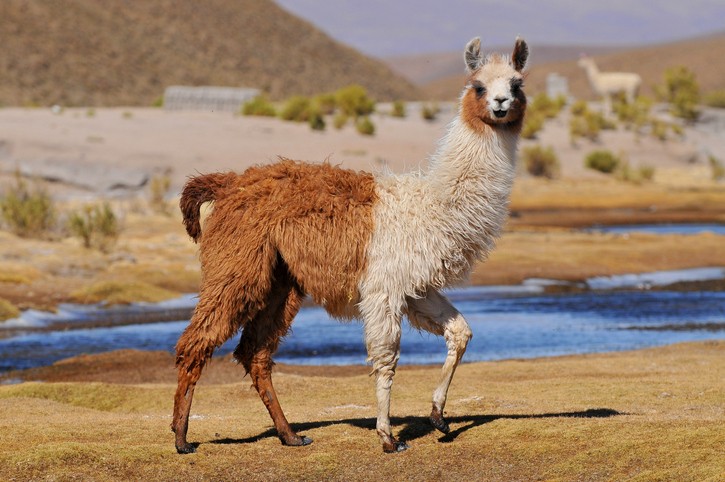
Llamas come in various shades of a wide range of solid colors and spotted patterns including white, black, gray, beige, brown and red.
Alpacas, on the other hand, have 22 naturally occurring coat colors ranging from white, black, roan, brown, pinto, fawn, gray, red and rose. When an alpaca’s coat is multicolored, it is often referred to as being “fancy.”
Personality
Although they both tend to be gentle creatures, llamas and alpacas have very different personalities.
Llama’s Personality
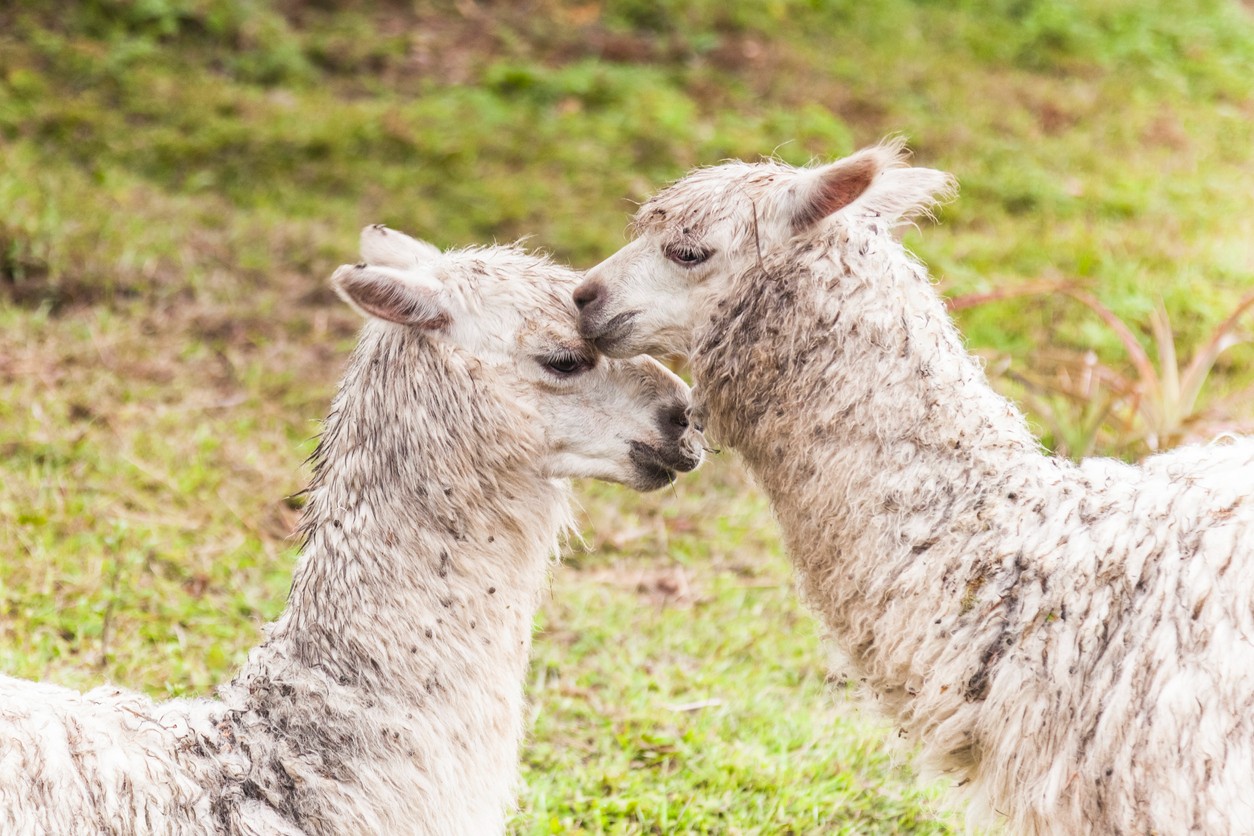
Llamas are solitary animals and prefer to keep to themselves. Llamas will, however, live peacefully in herds of other animals while also providing protection from predators. They are generally gentle as well as calm. In fact, llamas are often used in petting zoos because of their gentle and docile nature. Their use as therapy animals is increasing as well.
If mishandled, they may hiss, spit, kick or lie down and even refuse to move.
Llamas tend to be especially outspoken and make a variety of vocalizations, including humming sounds. Mother llamas even communicate in a special way with their babies by humming.
Alpaca’s Personality

Alpacas are shy creatures and feel safest when in the middle of an alpaca herd. They communicate with each other using body language and humming sounds.
Spitting
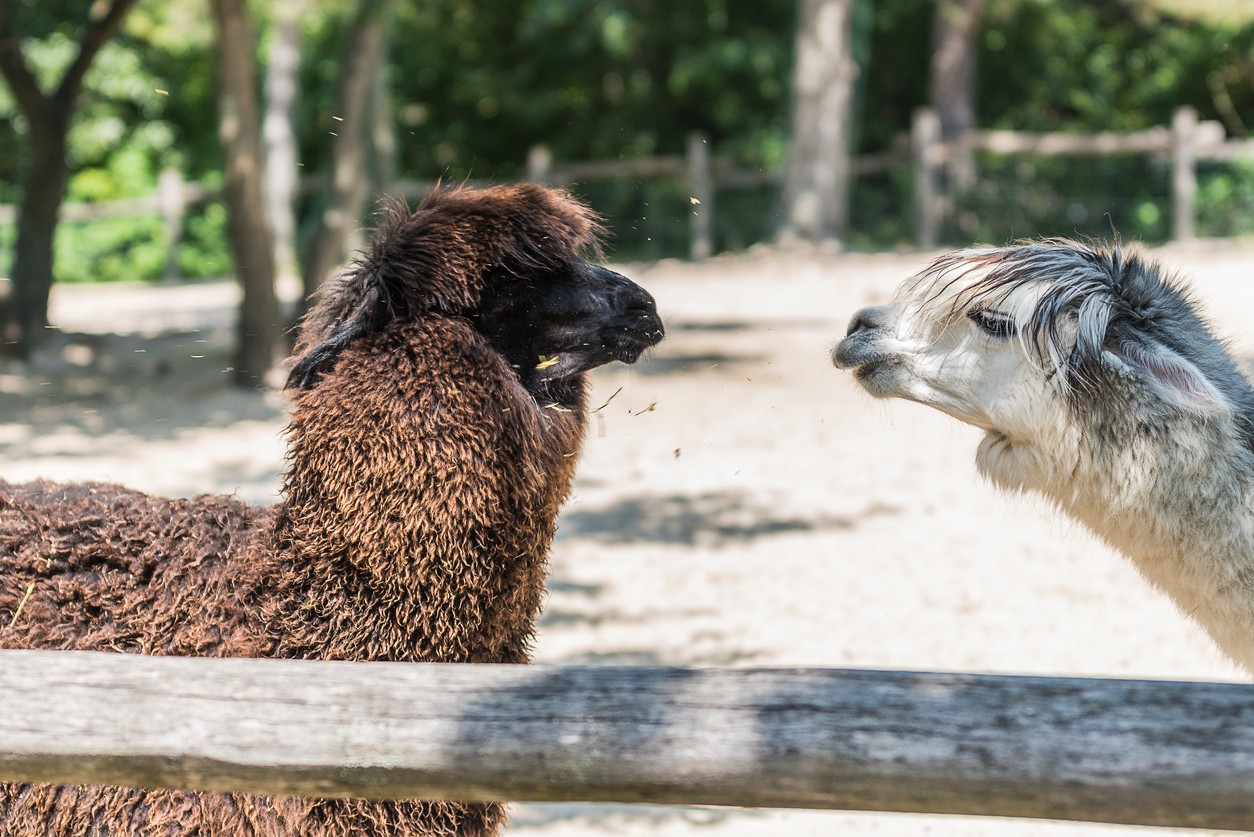
Although llamas are more likely to express their displeasure, both llamas and alpacas will spit when displeased. Llamas and alpacas spit:
- When they feel threatened or distressed
- As they determine pecking order within the herd
- When fighting over or competing for food
Llamas also spit when they feel an animal they are guarding is being threatened. A male llama may spit to establish his dominance as alpha of the herd. A female alpaca will spit at a male alpaca to show that she’s not interested in his attentions.
Alpacas tend to spit only air. Llamas, on the other hand, may shower you with regurgitated green matter and spit. Yuck!
Because an alpaca is gentle by nature and rarely spits, it’s said that if an alpaca spits at you, you probably deserve it!
Purpose
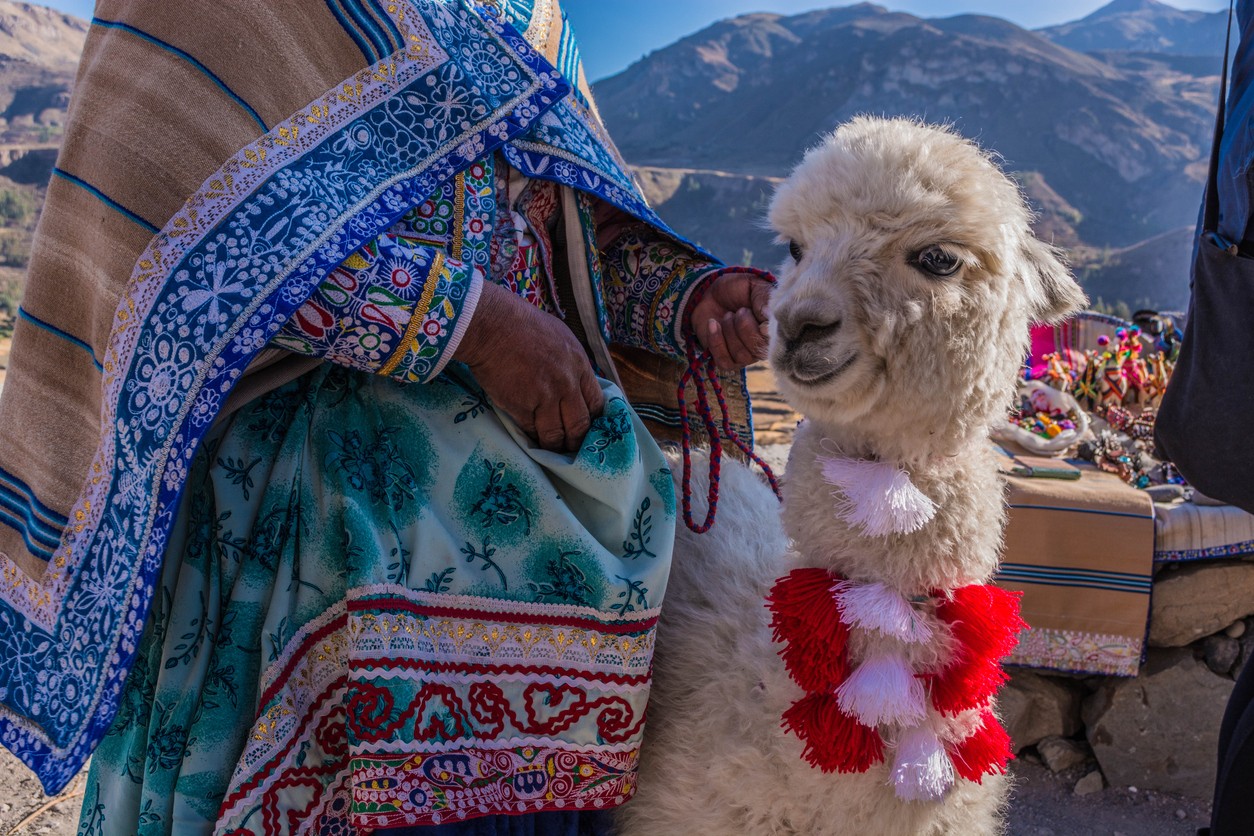
Llamas and alpacas have been beneficial to humans for thousands of years. Some scholars believe llama manure helped early humans switch from a hunting and gathering lifestyle to an agricultural way of life.
In the Inca Empire, alpacas, or their ancestors, the vicuña, were valued for their luxurious fleece.
Llamas and alpacas continue to be valuable to humans today. Scientists even believe antibodies taken from the llama could lead to the creation of a universal flu vaccine.
Let’s take a look at all the ways these camelids benefit humans.
Fiber
Llamas and alpacas both provide fiber; however, alpaca fleece is softer and more luxurious.
Guard Animals

Although llamas often prefer to keep to themselves, they do live peacefully with other animals and even act as guard animals. Due to this behavior, farmers and ranchers worldwide use them to protect livestock.
When a predator approaches the herd, the llama calls an alarm, alerting the herd to the threat. Then it approaches the predator. If the predator doesn’t leave, the llama will chase, kick or paw at it. A llama may kill a predator that refuses to leave. Llamas can be effective against a single dog, coyote or wolf; however, packs of predators may overwhelm a single llama.
Pack Animals
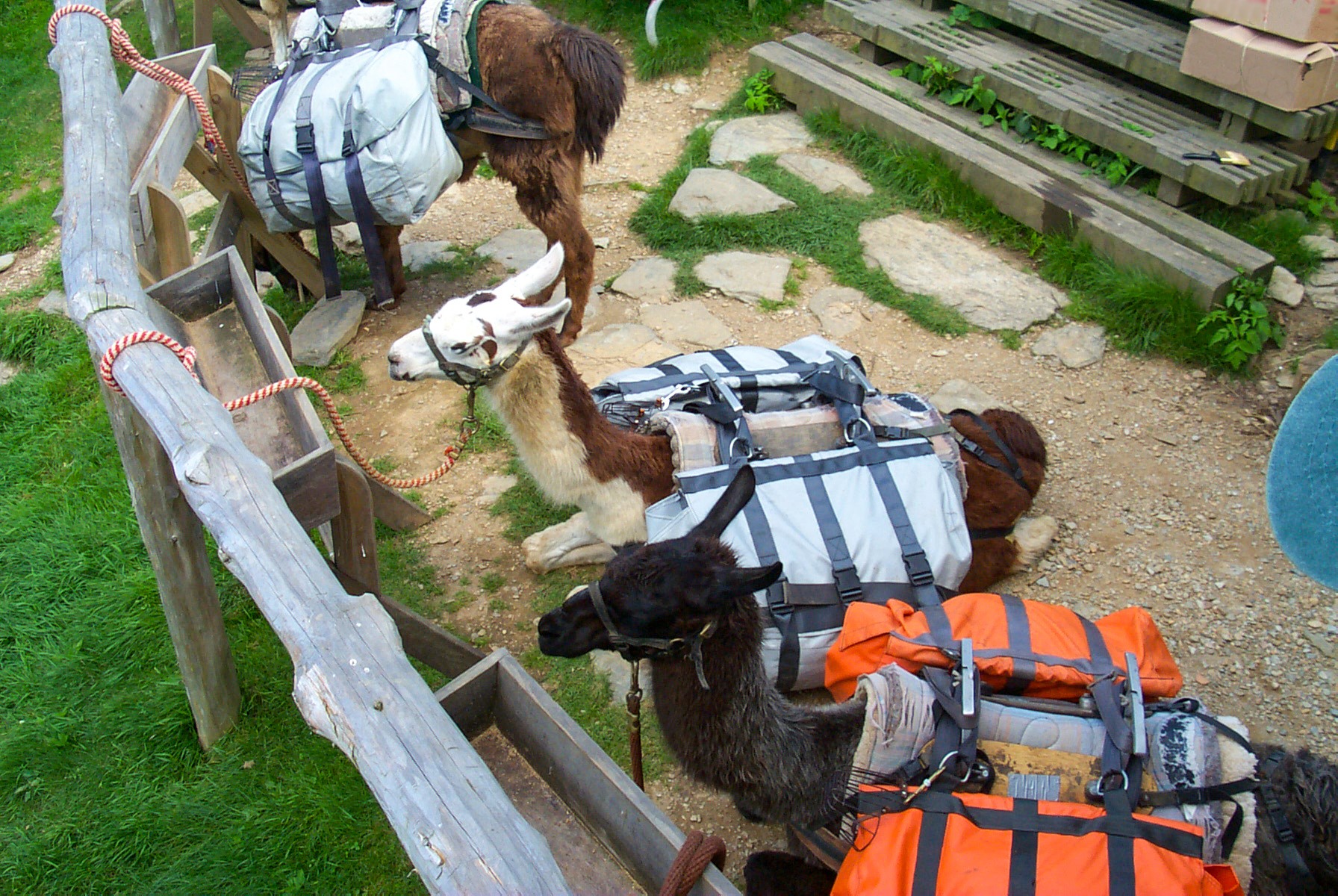
Although a llama is the typical choice, both llamas and alpacas are used as pack animals. Since llamas are larger and stronger, they’re able to carry more weight. In fact, a llama can carry around 75 pounds over a distance of at least 20 miles in a single day. The native people of the Andes Mountains have historically used hundreds of pack llamas, in what is called a pack llama train, to move goods over the area’s challenging terrain.
From being difficult to saddle to lying down and refusing to move, llamas can be temperamental when serving as pack animals. When irritated, they’ll even spit, hiss or kick until the load they’re supposed to carry is lightened.
Llamas are also used for trekking (hiking in the wilderness) to carry supplies and equipment.
Meat
Although people in the United States shy away from the idea because it’s foreign to us, people in other countries do raise llama and alpaca for meat and have done so for thousands of years.
Therapy Animals
Llamas make great therapy animals in schools, hospitals and nursing homes.
Hair
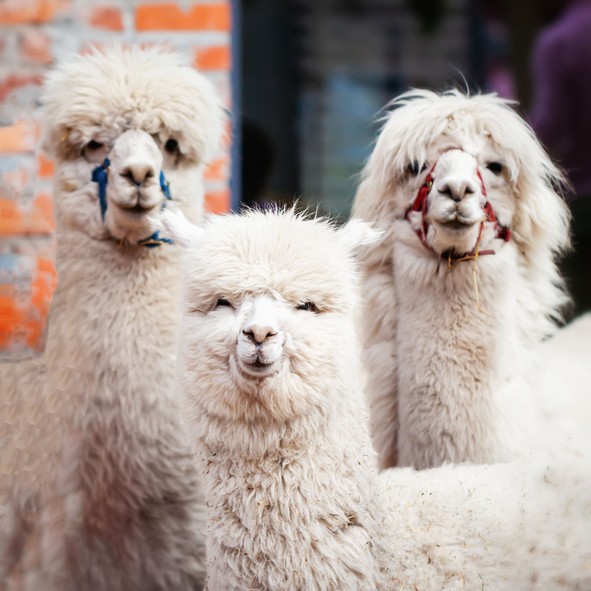
Llama fleece is very different from alpaca fleece. Llamas sport a coarse wool coat, whereas alpacas have hair that is longer and finer. Unlike lamb’s wool, both llama and alpaca fibers are free of lanolin which provides wool that’s hypoallergenic and doesn’t require harsh chemicals and high temperatures during processing.
Llama Fleece
The llama’s soft undercoat may be used to make garments, but it can’t compete with the luxurious soft fiber of alpaca fleece. The llama’s coarse outer coat is used to make ropes and rugs. Yarn made with llama wool is lightweight and soft, yet remarkably warm and water-repellent.
Baby llama fiber is sometimes used to create a softer product similar to alpaca wool.
Alpaca Fleece
There are two types of alpaca – huacaya (pronounced wakaya) and suri. Huacaya alpacas have fleece that is short, crimpy and dense, growing perpendicular to the skin. Suri, on the other hand, have hair that hangs loose and long, often forming lengthy “dreadlocks.” Ninety-five percent of alpacas worldwide are huacayas.
Alpaca fiber mimics cotton in its ability to wick moisture away from the skin. It can absorb as much as 15% of ambient humidity and remain unchanged. Alpaca wool is warmer, stronger and less itchy than sheep’s wool.
Location
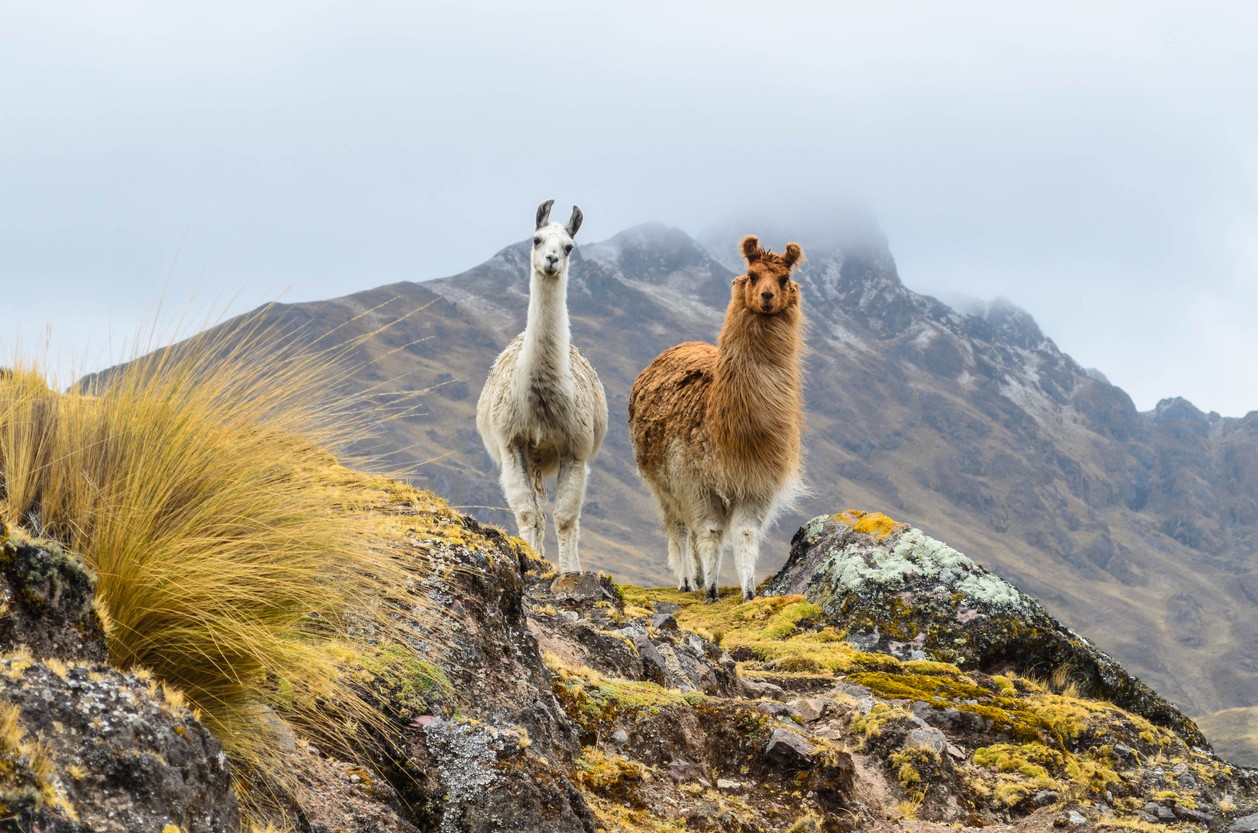
Although llama and alpaca once freely roamed the North American continent, they have since become extinct in North America. Instead, they migrated south and became native to parts of South America, particularly the high altitudes of the Andes Mountains in Chile, Peru, Argentina, Ecuador and Bolivia. Unfortunately, llamas and alpacas are no longer found in the wild.
Although the largest percentage of both llamas and alpacas can be found in South America, they are swiftly gaining popularity in other parts of the world, especially North America, Australia and Europe. One of the main reasons for the expansion of llamas worldwide is that they make great guard animals.
Ancestors
Llamas and alpacas are no longer wild species of camelids and live entirely as domesticated animals. Their wild cousins, however, roam freely in the Andes Mountains of South America. The guanaco (Lama guanicoe) is closely related to the llama and is believed to be its early ancestor. The vicuña (Vicugna vicugna) is thought to be the wild ancestor of the alpaca.
Until recently, the vicuña was on the endangered species list. Due to preservation efforts, its numbers have increased, and it’s no longer endangered. It is, however, still a protected species.
Humans have raised camelids for at least 6,000 years. That makes them one of the oldest known domestically raised animals in the world! Vicuña were especially valued by the Inca Empire who raised them for their luxurious, soft and fluffy fleece which was referred to as “the fiber of the gods.” In fact, vicuña fiber was so prized, no one but the upper class and nobility could use it to make clothing.
Play Funny Alpaca Slot at non Gamstop casinos from this website.
Vicuña wool is sometimes referred to as the golden fleece even today. For instance, a scarf made of vicuna fiber can retail for as much as $1200! It also comes with papers to prove its country of origin and authenticity.
See Llamas and Alpacas at Wild Animal Safari

A group of alpacas at Wild Animal Safari in Strafford, Missouri.
You don’t have to go all the way to Machu Picchu to see llamas and alpacas. Wild Animal Safari gives you the opportunity to view them in a natural habitat right here in the United States. Come check them out for yourself at one of our Wild Animal Safari locations in Pine Mountain, Georgia; Strafford, Missouri; and Bryan-College State, Texas and see if you can see the differences for yourself.

